Plasma in military affairs: opportunities and problems
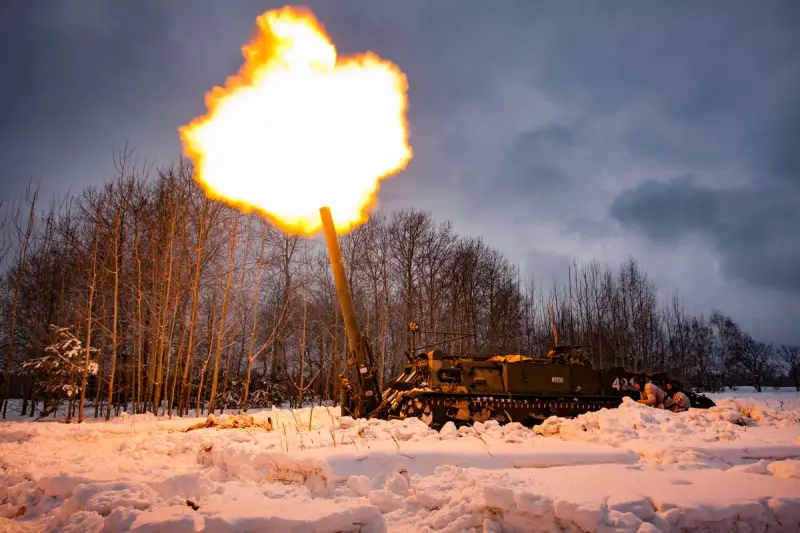
The flame during combustion of a propellant charge is a special case of plasma. Photo by the Russian Ministry of Defense
Various weapons based on ionized gas - plasma - have long been firmly entrenched in science fiction. In reality, plasma is still used only in certain forms, and we are not talking about a fantastic superweapon, but about familiar effects and means. However, leading countries continue the necessary research and work on so-called weapons. new physical principles. Thanks to this, the situation may change in the future.
Damage factor
Let us recall that plasma is the fourth state of matter and is a partially or completely ionized gas with an almost equal number of positively and negatively charged particles. Plasma is characterized by high (by the standards of normal conditions) temperature, glow, electromagnetic radiation and other signs. In nature, plasma is found in stars and interstellar space, in the form of lightning, etc. Artificially created plasma is present in devices of different classes, from household lamps to thermonuclear reactors.
It is curious that plasma has been present in military affairs since ancient times, although with certain reservations. Thus, a variety of incendiary systems and means, from the ignited arrows of antiquity to modern flamethrowers, create a flame - actually a low-temperature plasma. When an explosive is detonated, a flash occurs, also created by ionized gas.
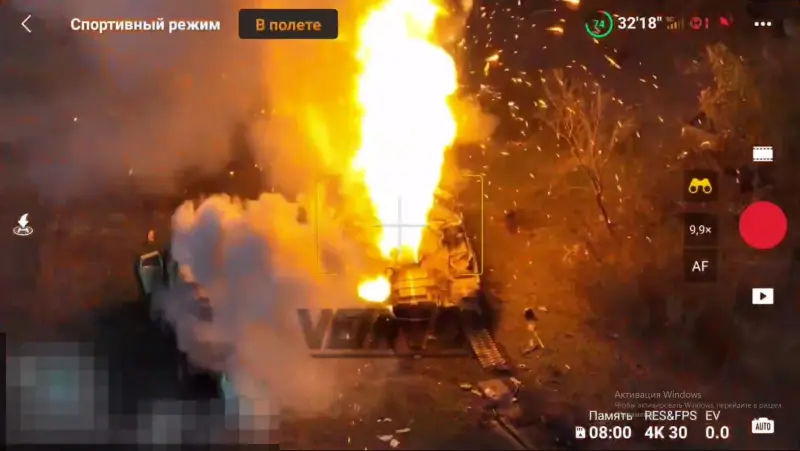
The Ukrainian tank is exposed to low-temperature plasma, or, in other words, burns. Photo Lostarmour.info
In these cases we are talking about low-temperature plasma. At the same time, it has a fairly high energy and tends to transfer it to the surrounding substance, which leads to fire or detonation of the latter. The result of such processes is the defeat of the target, causing one or another damage.
The most striking manifestation of plasma in military affairs in every sense is the flash of a nuclear / thermonuclear explosion. During the fission or fusion of nuclei, colossal energy is released, affecting the parts of the warhead, the surrounding air and the underlying surface. Under the influence of this energy, the substance goes into a gaseous state and is ionized. The resulting plasma cloud creates light radiation - one of the main damaging factors of a nuclear explosion. The radiation power in the visible range and beyond is sufficient to ignite objects at a considerable distance from the point of explosion and to cause other damage at a greater distance.
Plasma sheath
It should be noted that in military affairs plasma is present not only as a kind of weapon. Several decades ago, it became an additional challenge for rocket and missile designers. aviation technology. However, later they learned to deal with this problem, and attempts were also made to put a complex physical phenomenon at their service.
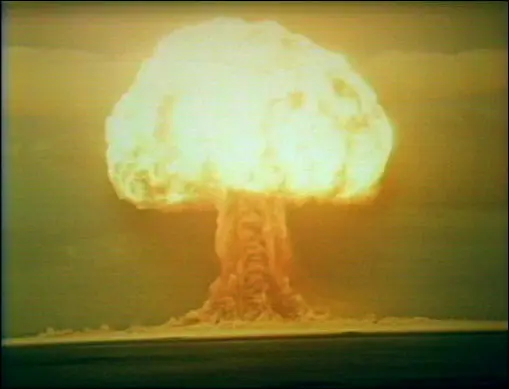
Detonation of the RDS-6s nuclear weapon; the glow is due to the presence of plasma in the cloud. Photo of the USSR Ministry of Defense
It is well known that when an aircraft moves at high speed, its surface and the surrounding air heat up from friction against each other. During hypersonic flight, the air temperature can reach thousands of degrees, as a result of which it turns into a plasma state. As a result, the aircraft ends up in the so-called. plasma cocoon, which is maintained until the flight speed decreases below a certain limit.
The plasma layer around the body places special demands on the aircraft design - it must withstand the expected mechanical and thermal loads. To create and manufacture such a product, a serious scientific and technological base is required, covering the fields of materials science, design, aerodynamics, etc.
Special requirements arise for the on-board equipment of the aircraft. The plasma shell shields radio signals, causing it to lose the ability to communicate with external systems, and also cannot use some types of navigation and guidance. In this regard, autonomous equipment with high performance is required. However, there are fragmentary reports on solutions to isolation problems. Modern hypersonic aircraft can supposedly communicate and perform homing.
The plasma cocoon simplifies the detection and tracking of the aircraft. A cloud of ionized gas around a hypersonic object can be detected by radar or infrared surveillance. In addition, a trail of plasma and hot air remains behind the aircraft, which can also be detected by appropriate equipment. However, the ease of detecting an incoming missile or warhead does not guarantee its timely interception - a high flight speed will sharply reduce the permissible reaction time for air defense and missile defense.

Schematic representation of the Avangard gliding combat unit in a plasma cocoon. Graphics of the Ministry of Defense of the Russian Federation
As far as we know, leading countries have studied the possibility of using a plasma cocoon to their advantage. In particular, rumors are circulating about the development of special plasma generators that should impair the visibility of airplanes or other aircraft. Whether such projects actually exist, how far they have progressed and on what principles they work is unknown.
Space technology
Since the late fifties, leading countries have been working on creating a rocket engine using ionized gas. In the early sixties, the first results of these programs were tested on test benches, and by the middle of the decade, tests began in outer space. In the future, the so-called Plasma engines have become quite widespread and are still used today.
The concept of such a propulsion system is quite simple. Using a set of magnets and electrical devices, the gaseous working fluid is heated and ionized. Already in the sixties, it was possible to obtain plasma temperatures of the order of 30°K and its outflow speed of 000-15 km/s. The plasma engine is inferior to other installations in terms of maximum thrust, but outperforms them in terms of operating time.
Plasma engines and electric propulsion systems in general are widely used on a variety of spacecraft, incl. on military equipment. Such products are most effective as shunting engines, which require high precision and limited thrust.
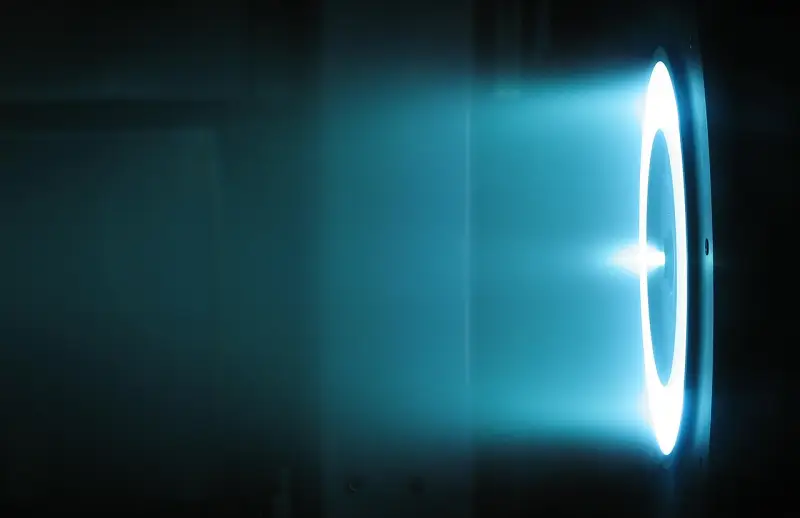
Operation of a plasma rocket engine. Photo by NASA
Non-lethal plasma
An interesting option for using plasma was proposed in the United States in the past. It was proposed to obtain it using a laser of sufficient power and use it to inflict limited and controlled damage on the target. Subsequently, this idea was implemented in several experimental projects that were brought to testing. However, none of these projects have progressed beyond tests in the laboratory or on the test site.
In the early stages of laser development weapons Various methods of influencing the target were explored. In particular, the possibility of damaging objects with short powerful pulses was studied. Such studies have shown that with certain combinations of beam power, pulse duration and target material, the outer layer of the target literally evaporates, incl. with plasma formation and corresponding additional effects.
They decided to study this principle in the context of non-lethal systems. During the nineties and two thousand years, several organizations successively developed products Pulsed Impulsive Kill Laser (PIKL), Pulsed Chemical Laser (PCL), Pulsed Energy Projectile (PEP), etc. with different technical features and general principles of operation. In the tens, other products appeared, the newest of which was the SCUPLS (Scalable Compact Ultra-Short Pulse Laser System) complex.
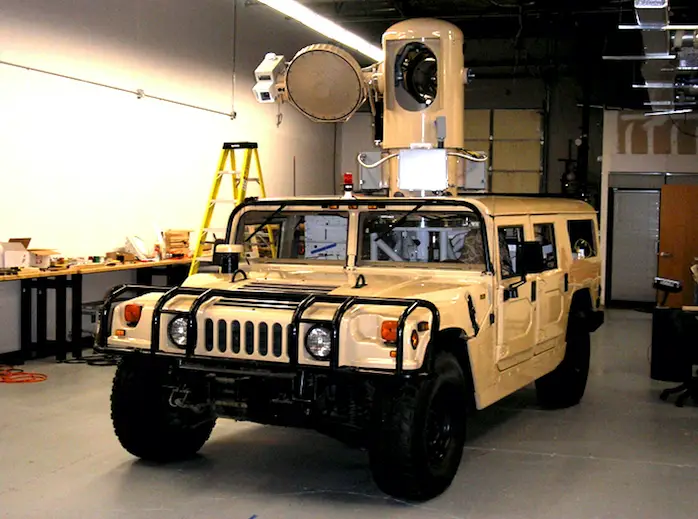
Experimental non-lethal laser complex PEP. Photo by US Department of Defense
Operating principle of PIKL, PCL, etc. systems. was simple enough. The laser beam or beams had to be focused directly in front of the target. A short, high-power pulse would ionize the air at the focal point and turn it into plasma. The resulting cloud of gas could affect a person or other object. Direct injury and damage were virtually excluded, but electromagnetic radiation from the plasma should have created severe pain.
All projects used the same operating principle, which varied slightly based on the results of the tests. In addition, the products differed in the types and parameters of the lasers used. In particular, in later projects they found the optimal wavelength and power that give the desired effect and reduce the risks to the health of the target person. However, such systems have been criticized from a humanistic point of view, and by now work has effectively stopped.
Old New Principles
Thus, plasma has long been widely used in military affairs, but only in its individual manifestations. First of all, it is used in the form of fire caused by the simplest incendiary ammunition or the light radiation of a nuclear explosion. In addition, plasma rocket engines for space technology have existed and been used for several decades. Then weapons began to face the problem of the plasma cocoon, which places special design requirements.
In general, the topic of ionized plasma gas has been well studied, and there are various ideas and developments for its use in the military sphere. On their basis, various designs of systems of one kind or another with good theoretical potential are being developed. However, promising weapons based on the so-called. new physical principles, for one reason or another, has not yet gone beyond the boundaries of laboratories and test sites. Time will tell how soon and how this situation will be changed.
Information